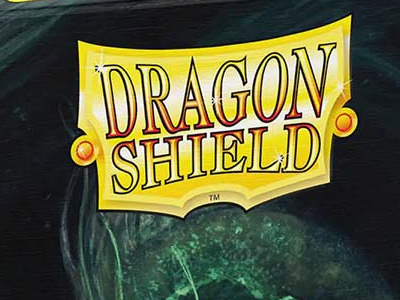Sharpening the Sword is a new regular column by John Riley, who owns Grasshopper's Comics, a 1300-square foot comic and game store in Williston Park, New York. In his first column, Riley talks about his strategy for targeting the game customers that are most valuable to his store's profitability, using a strategy first implemented on a large scale by mass merchant Best Buy.
Welcome to Sharpening the Sword! I'm honored to be joining the folks who contribute regularly to ICv2 and hope I can live up to the high standard that they've set. For those who don't know me, I own Grasshopper's Comics here on Long Island about 20 minutes outside of New York City. We're in our 13th year and have a 1,300 square foot store split pretty much evenly between comics and games. Although I believe that there is always a need to discuss the state of the industry, I'm hoping to keep my column focused on business concepts that we can hopefully apply to all our specialty stores. Please understand that in no way am I saying that I know more than anyone else out there. Far from it!! At this point I like to think that I'm finally starting to learn what I'm doing! So I'll be using this column to cover some of the business ideas and concepts that I've been trying to apply to my own business. Hopefully, it will give you something to think about, and if nothing else it helps me think these things through.
OK, let's start. My first lesson this year came from Best Buy who, following Columbia Business School Professor Larry Selden, realized last winter that not all customers are created equal. In his book, Angel Customers and Demon Customers, Selden argues that shoppers can be segmented into two general types: 'angels,' who buy high-margin goods at full price, and 'demons,' who can chew up profits by bargain hunting, returning purchases, and tying up customer service reps. 'Smart retailers,' Selden says, 'cater to the angels, find ways to reform the demons - and then watch profits take off.' Apparently this worked for Best Buy, which redesigned 32 stores around this concept and saw increases in sales, profits, and close rates.
Immediately, I'm sure that there are many people out there who are saying, 'That's fine for Best Buy, but I doubt that can really be applied to our industry.' Well, not only do I think it can be applied, but it already has.
Let's look at gamers. We can divide gamers into three general categories: beginners, regulars, and 'alpha' gamers. Beginners usually spend a lot of money as they enter the hobby and get up to speed (similar to purchasing a video game system) and need some degree of handholding. Regulars continue buying, though not usually at the same rate as when they started, and usually take up a lot of resources (in the form of space, events, tournaments and other promotions) to keep their interest high. Alpha gamers usually spend a huge amount of money and couldn't care less if you ever cleaned the place but are a very small minority.
With this in mind, let's look at the average Games Workshop company-owned store. These stores are extremely resource-efficient: small space (usually 500 - 800 sq feet), limited displays, and sales staff focused entirely on one product. Coincidentally these stores are targeted almost exclusively at the beginners. And if you remember, beginners happen to be the ones who spend the most money. Since the game is new to the novice, even a basic display can generate tremendous excitement, same with events. Considering that GW refers to their own stores as 'Recruitment Centers,' it's clear that their retail model is to use the smallest set of resources to cater to the group that spends the most money. Don't believe me? GW Rogue Trader materials state that a new player will spend $600 in the first year on average, while an established gamer will spend only $300 per year. Which customer would you target?
Of course GW company stores do not ignore the regular or alpha gamer. Alpha gamers love to go 'to the source' of the hobby. And while the stores usually don't provide the play space or events that established gamers want, they certainly don't turn these people away. For GW this is a very efficient retail model, especially considering that as the manufacturer they make money off of the efforts of independent stores that expend far greater resources in terms of space and event staff to cater to established gamers who want more than the company stores offer.
GW's application of this principle is a good starting point to examine how we can apply it in our stores. First of all, although GW targets the beginner, or 'angel' customer, they aren't ignoring or turning away the 'demon' (a choice of words I'm not entirely comfortable with). And nor should we. The idea is not to abandon or turn away any customers but rather to make our store as accessible as possible to those who will naturally spend the most. Simultaneously, we should change our environment and policies to alter the behavior of those customers who take up a great deal of our resources but don't really spend much money at all. If you're like me, you're already thinking about how this applies to your store.
Before I end this part I'd like to clarify something. Our business is a very social and friendly one in which we often establish close, long-term relationships with our customers. I've been invited to five of my customers' weddings this year alone! It's one of the unique characteristics that make our business so special. In no way am I saying that we should change this, or that a customer's value is based only on the amount they spend. This concept isn't about changing those relationships, but rather to identify and address these different groups so that we can make our stores as profitable as possible and increase those relationships as well. After all, while we value all our customers tremendously, we're running businesses not clubs.







